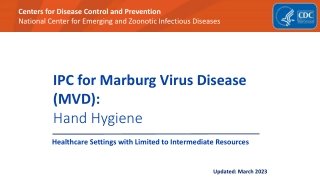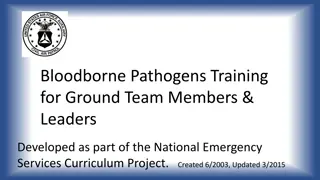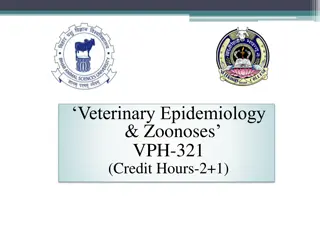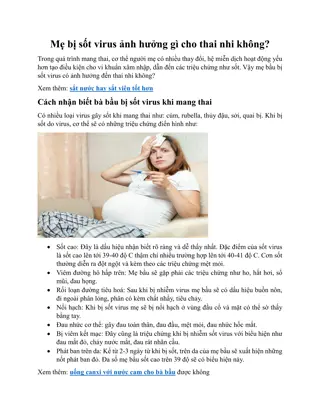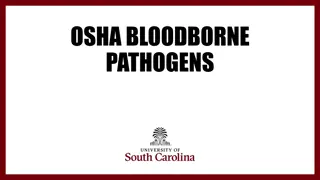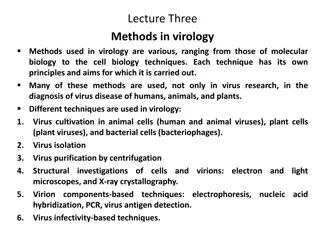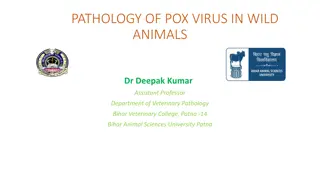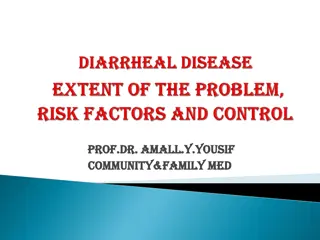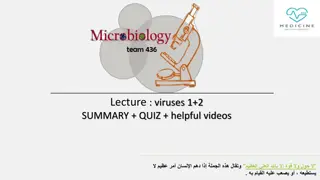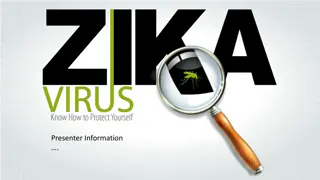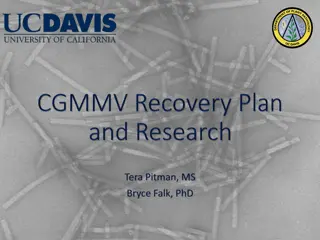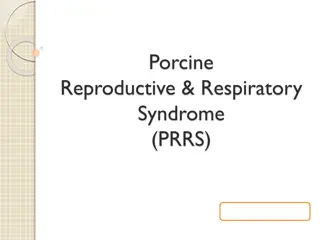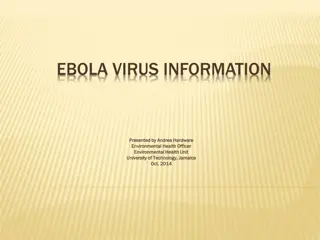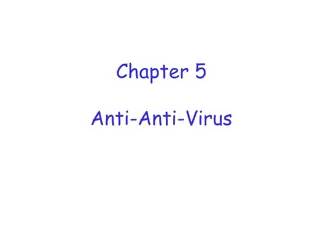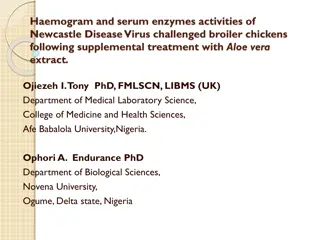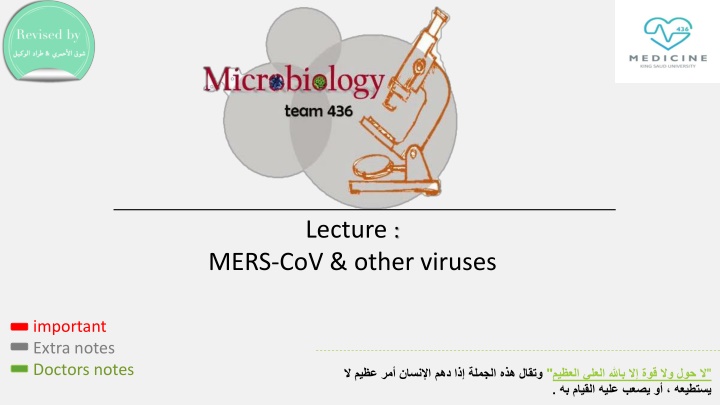
MERS-CoV and Other Viruses: Important Lecture Notes for Doctors
Explore detailed notes on MERS-CoV, Rhinovirus, Coxsackieviruses, and other important viruses. Learn about their characteristics, mode of transmission, clinical features, lab diagnosis, treatment, and prevention strategies. Dive deep into topics such as Severe Acute Respiratory Syndrome (SARS) and Middle East Respiratory Syndrome (MERS) for a comprehensive understanding of these viral illnesses.
Download Presentation

Please find below an Image/Link to download the presentation.
The content on the website is provided AS IS for your information and personal use only. It may not be sold, licensed, or shared on other websites without obtaining consent from the author. If you encounter any issues during the download, it is possible that the publisher has removed the file from their server.
You are allowed to download the files provided on this website for personal or commercial use, subject to the condition that they are used lawfully. All files are the property of their respective owners.
The content on the website is provided AS IS for your information and personal use only. It may not be sold, licensed, or shared on other websites without obtaining consent from the author.
E N D
Presentation Transcript
Lecture : MERS-CoV & other viruses important Extra notes Doctors notes " . "
Objectives: Characteristics of MERS-CoV, Rhinovirus, Coxsackieviruses Picronaviruses, Adenovirus, Epstein Barr virus & other. Mode of transmission Clinical features Lab diagnosis Treatment & prevention
1- Introduction Severe forms of Coronavirus Structural features: Enveloped virus with (+ve) polarity ss-RNA genome. Transmission: Inhalation of infectious aerosol droplets. Ex: The 2nd cause of common cold. It causes zoonotic disease* Family: Coronaviridae. SARS-CoV MERS-CoV *(the virus is capable of infecting humans and animals including birds, camels and others). NOTE: (-ve) polarity : we said in the previous lecture it is mean that the RNA of the virus will transcription to mRNA then translation to protein But (+ve) polarity : the RNA of the virus will act as a mRNA so it s going to translation directly (NO transcription) \
SARS-CoV Severe Acute Respiratory Syndrome (SARS) In winter of 2002, a new respiratory disease known as (SARS) emerged in China after a new mutation of coronavirus. The disease spread worldwide due to travelling. The animal reservoir may be cats or rats SARS starts with high fever followed by cough with difficulty in breathing (atypical pneumonia). Associated with high mortality due to respiratory failure.
MERS-CoVgeneral info. Middle East Respiratory Syndrome coronavirus (MERS-CoV) general info. Epidemiology Epidemiology Transmission Transmission risk group risk group - Clinical Features Complications - Lab diagnosis Treatment - Prevention is viral respiratory illness first reported in Saudi Arabia in 2012. It is caused by a coronavirus. Epidemiology: -So far, all the cases have been linked to countries in and near the Arabian Peninsula. -Highly infectious, peak in winter. -Incubation period 2-14 days. Transmission: -This virus spread from ill people to others through close contact. -There is no evidence of sustained spreading in community settings. -Evidence also suggested that the virus can be acquired from direct close contact with animals. Riskgroup: -Individuals with weakened immune systems -People with pre-existing medical conditions (or comorbidities) such as diabetes, cancer, and chronic lung, heart, and kidney disease. Less severity than SARS
MERS-CoVgeneral info. Epidemiology Transmission risk group -Clinical Features Clinical Features Complications Complications - Lab diagnosis Treatment - Prevention Clinical Features: They had fever, cough, and shortness of breath. Some people also had gastrointestinal symptoms including diarrhea and nausea/vomiting. Some infected people had mild symptoms (such as cold-like symptoms) or no symptoms at all and they recovered completely. Most people with comorbidities developed severe acute respiratory illness. Complications: - Severe complications include pneumonia and kidney failure. About 30% of people with MERS-Co died.
MERS-CoVgeneral info. Epidemiology Transmission - Clinical Features Complications - Lab diagnosis Lab diagnosis Treatment Treatment - - Prevention Prevention Labdiagnosis: Detection of the viral nucleic acid (NA) by PCR. Other methods: Isolation of the virus from NPA by cell culture. Treatment: No specific antiviral treatment. For severe cases, current treatment includes care to support vital organ functions. Prevention: People are advised to protect themselves from respiratory illnesses by taking everyday preventive actions: -Wash your hands often with soap and water for 20 seconds, and use an alcohol-based hand sanitizer. -Cover your nose and mouth with a tissue when you cough or sneeze, then throw the tissue in the trash. -Avoid touching your eyes, nose and mouth with unwashed hands. -Avoid personal contact, such as kissing, or sharing cups or eating utensils, with sick people. -Clean and disinfect frequently touched surfaces such as toys and doorknobs.
2- Rhinovirus Family: Picornaviridae. Structuralfeatures: Non-enveloped virus with (+ve) polarity ssRNA genome, more than 100 serotypes available. Transmission: Inhalation of infectious aerosol droplets. Clinicalsymptoms: The 1st cause of common cold. The main symptoms of common cold are sneezing, clear watery nasal discharge with mild sore throat, and cough. Lab diagnosis: routine testing by detection of the viral NA from NPA using PCR. Treatmentandprevention: Usually self-limiting disease, no specific treatment, and no vaccine available.
3- Coxsackieviruses & other Picronaviruses Family: Picornaviridae. Structuralfeatures: -Non-enveloped virus with (+ve) polarity ssRNA genome -Coxsackieviruses group A & B, Echovirus, Enteroviruses. Transmission: -Inhalation of infectious aerosol droplets. Clinical symptoms: -Coxsackieviruses commonly cause herpangina and pharyngitis -Echovirus & other Enteroviruses cause respiratory symptoms Lab diagnosis: -routine testing by detection of the viral NA from NPA using PCR. Treatment and prevention: -Usually self-limiting disease, no specific treatment, and no vaccine available.
4- Adenovirus Family: Adenoviridae. Structuralfeatures: Non-enveloped virus with ds-DNA genome. Pathogenesis: Adenovirus infects epithelial cell lining respiratory tract, conjunctiva, urinary tract, gastrointestinal tract and genital tract. Clinicalsyndrome: 1. Phrayngitis and tonsilitis. 2. Pharyngioconjunctivitis 3. Conjunctivitis. 4. Pneumonia: in preschool children. 5. Gastroenteritis. 6. Acute hemorrhagic cystitis. 7. UTI (Cervicitis and urethritis). Labdiagnosis: routine testing by Direct detection of the Ag from NPA by direct IFA (immunoflourecent assay ). Other detection methods: tissue culture, PCR. Treatment andprevention: No specific treatment or vaccine.
5- Epstein Barr Virus (EBV) Family: Herpesviridae Structure: -Enveloped , icosahedral dsDNA virus -It is lymphotropic (means likes the lymphoid tissues) -It has oncogenic properties: -Burkitt s lymphoma -Nasopharyngeal carcinoma - B-cell lymphoma Epidemiology Distribution :worldwide (Mainly in teenagers & young adults) Transmission: Saliva [kissing disease] - Blood [rarely] Age: Socio-economic status: SE Low SE class---<early childhood High SE class ---- < adolescence Clinical Features: Immunocompetent host: Asymptomatic - Infectious mononucleosis [or glandular fever] IP = 4-7 weeks Fever, sore throat, tonsillitis, pharyngitis, malaise, hepatosplenomegaly & abnormal LFT, hepatitis.
5- Epstein Barr Virus (EBV) Complications: (acute air way obstruction, splenic rupture, CNS infection) Immunocompromised host: Lymphoproliferative disease ( LD), Oral hairy leukoplakia (OHL) Diagnosis: 1-Hematology: WBC , lymphocytosis (Atypical lymphocytes) 2-Serology tests: Non-specific AB test: Heterophile Anti-bodies +ve , Paul-Bunnell or monospot test EBV-specific AB test: Detection of IgM Anti-bodies to EBV capsid antigen by ELISA Treatment and Prevention: There is no treatment for Infectious mononucleosis, No vaccine
GOOD LUCK! MICROBIOLOGY TEAM: Waleed Aljamal (leader) Ibraheem Aldeeri Ibrahim Fetyani Abdulaziz almohammed Abdulmalik alghannam Omar albabtain Turki maddi Mohammad alkahil Meshal Eiaidi Khalid Alhusainan Khalid Alshehri Nasir Aldosarie Shrooq Alsomali and Ghadah Almazrou (leaders) Reema albarrak Aseel nasser The Editing File We are waiting for your feedback @microbio436 436microbiologyteam@gmail.com

